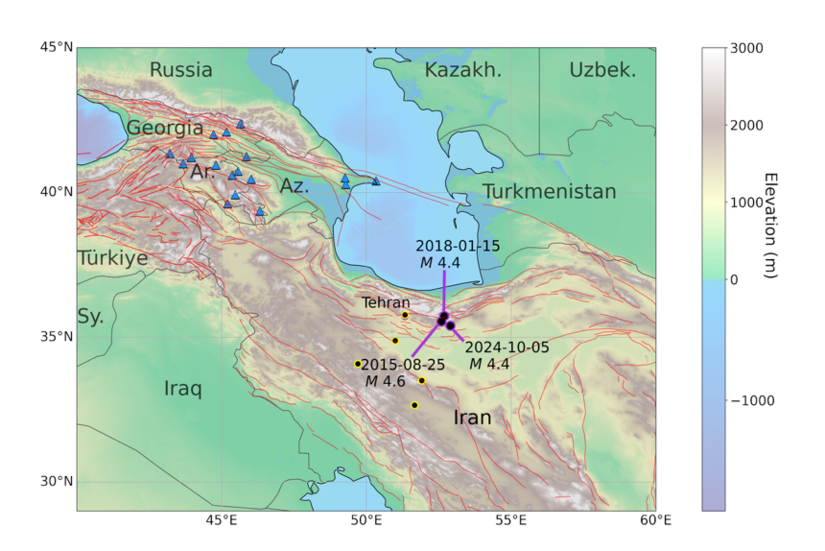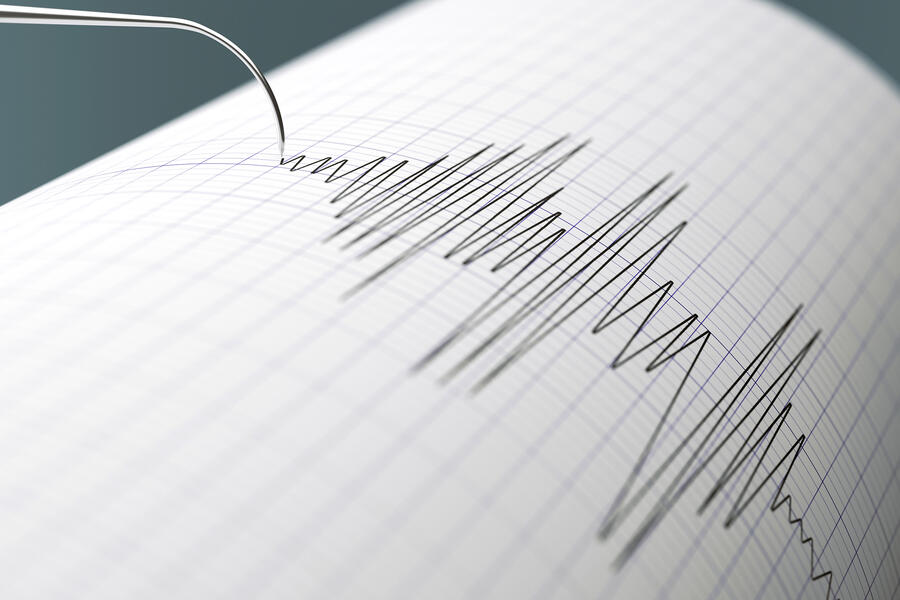- Name
- Roberto Molar Candanosa
- rmolarc1@jh.edu
- Office phone
- 443-997-0258
- Cell phone
- 443-938-1944
A new study debunks claims that a magnitude 4.5 earthquake in Iran was a covert nuclear weapons test, as widely alleged on social media and some mainstream news outlets in October 2024, a period of heightened geopolitical tensions in the Middle East.
Led by Johns Hopkins University scientists, the study warns about the potential consequences of mishandling and misinterpreting scientific information, particularly during periods of international conflict. The findings appear in the journal Seismica.
Key Takeaways
- Seismic data shows a natural fault-driven event, not a covert nuclear test, caused an October 2024 earthquake in Iran.
- False nuclear test claims hit social media just minutes after the earthquake, escalating with misused data and links to unrelated events.
- English-language media outlets, especially in India, fueled the misinformation, while Persian-language media largely got the science right.
"There was a concerted misinformation and disinformation campaign around this event that promoted the idea this was a nuclear test, which is not something you often see happen with an earthquake," said Benjamin Fernando, a Johns Hopkins seismologist who led the study. "This shows how geophysical data played an important role in a geopolitical crisis."
The earthquake occurred on Oct. 5, approximately 50 kilometers (31 miles) southwest of Semnan, a city in northern Iran, and about 216 kilometers (134 miles) east of Tehran. Iran is prone to earthquakes, as it sits within a seismically active region at the convergence of the Arabian and Eurasian tectonic plates.

Image caption: Triangles mark seismometers used to study the Oct. 5 earthquake, along with two similar events identified by the Comprehensive Test Ban Treaty Organization. The 2015 event shares a nearly identical seismic pattern with the 2024 earthquake. Key Iranian nuclear facilities are shown as yellow and black dots. Red lines indicate major fault zones.
Image credit: Benjamin Fernando / Johns Hopkins University, with topography provided by NOAA.
Fernando's team analyzed seismic signals from the event, identifying natural seismic activity caused by the earthquake. Using publicly available data from seismic monitoring stations, the researchers concluded that the earthquake originated along a gently sloping fault where Earth's crust was being deformed by the collision between Arabia and Eurasia. The process aligns with the geophysical forces that characterize the region's tectonically active interior and rules out any connection to a particularly unusual source or nuclear test, the study concludes.
"Seismic waves carry information about the earthquake that produced them as they propagate around the planet. By recording the waves at different points on the Earth's surface, we can work out what the properties of the source that produced them were," Fernando said. "In this case, the source was what we call a reverse fault—a motion associated with the Earth's crust being crushed as the Arabian and Eurasian plates collide. Nuclear tests have very different signatures, which are explosive."
Historical seismic data further supports this conclusion, Fernando said. The Comprehensive Test Ban Treaty Organization (CTBTO), which monitors nuclear tests worldwide, reported that earthquakes with similar characteristics and magnitudes occurred in the same region in 2015 and 2018—both unrelated to nuclear activity.
Despite the clear scientific evidence of natural seismic activity, claims that the earthquake was a nuclear test began spreading rapidly on social media just 17 minutes after the event. Initial tweets misinterpreted seismic data, which soon gave way to misinformation and likely active disinformation, Fernando said.
The first suggestion that this was a nuclear test appeared on Twitter/X 27 minutes after the earthquake. Over the following hours, misinformation escalated, with some posts citing seismic data from an entirely different earthquake in Armenia earlier that day to substantiate the nuclear test narrative.
The misinformation gained traction as conspiracy theories linked the Iranian earthquake to a supposed seismic event in Israel the same evening. While the study noted that it is difficult to confirm deliberate disinformation, the sustained engagement and specialized use of seismology data on social media suggest potential human authors with expertise. One of the most widely shared posts promoting the nuclear test theory came from an account tied to Russian-supported disinformation campaigns, the researchers found.
Within hours of the event, the false narrative moved from social media to news reports worldwide. Indian English-language media outlets were the most active in reporting the nuclear test claims, often referencing each other's stories, and citing the incorrect seismic data. The researchers also identified media reports from the United States, Israel, Pakistan, Zimbabwe, France, and the United Kingdom.
In contrast, Persian-language media generally described the event accurately as a natural earthquake. These reports drew on local expert commentary and official seismic data more often than English-language media, offering a more precise understanding of the event.
The researchers recommended greater rapid-response collaborations among seismologists to quickly fact-check and correct misinterpretations of data, and to more actively counter misinformation.
"Scientific agencies could issue detailed reports swiftly to counter misinformation," said co-author Saman Karimi, a Johns Hopkins geophysicist. "Giving amplification to contents coming from verified scientific accounts could help reduce the misleading narrative. This can be done via partnership between social media platforms and trusted seismologists or agencies such as the U.S. Geological Survey."
Other authors are Ross Maguire of University of Illinois Urbana-Champaign, Brianna Fernandez of Brown University, Elizabeth Koenck of Georgetown University, Göran Ekström of Columbia University, Tom Rivlin of Technische Universität Wien, and Celeste Labedz of University of Chicago.
Posted in Science+Technology








